Related Research Articles

Agustín de Iturbide, full name Agustín Cosme Damián de Iturbide y Arámburu and also known as Augustine of Mexico, was a Mexican army general and politician. During the Mexican War of Independence, he built a successful political and military coalition that took control in Mexico City on 27 September 1821, decisively gaining independence for Mexico. After securing the secession of Mexico from Spain, Iturbide was proclaimed president of the Regency in 1821; a year later, he was proclaimed Emperor of Mexico, reigning briefly from 19 May 1822 to 19 March 1823. In May 1823 he went into exile in Europe. When he returned to Mexico in July 1824, he was arrested and executed. He designed the Mexican flag.

Vicente Ramón Guerrero Saldaña was one of the leading revolutionary generals of the Mexican War of Independence. He fought against Spain for independence in the early 19th century, and later served as President of Mexico. As a man of part African ancestry, he abolished slavery on a national level during his brief term as president. His capture and treacherous execution in 1831 by the conservative and ex-royalist regime that had ousted him in 1829 was a shock to the nation.
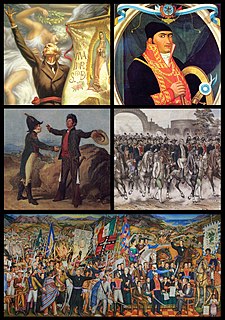
The Mexican War of Independence was an armed conflict and political process resulting in Mexico's independence from Spain. It was not a single, coherent event, but local and regional struggles that occurred within the same time period, and can be considered a revolutionary civil war. Independence was not an inevitable outcome, but events in Spain itself had a direct impact on the outbreak of the armed insurgency in 1810 and its course until 1821. Napoleon Bonaparte's invasion of Spain in 1808 touched off a crisis of legitimacy of crown rule, since he had placed his brother Joseph on the Spanish throne after forcing the abdication of the Spanish monarch Charles IV. In Spain and many of its overseas possessions, the local response was to set up juntas ruling in the name of the Bourbon monarchy. Delegates in Spain and overseas territories met in Cádiz, Spain, still under Spanish control, as the Cortes of Cádiz, which drafted the Spanish Constitution of 1812. That constitution sought to create a new governing framework in the absence of the legitimate Spanish monarch. It tried to accommodate the aspirations of American-born Spaniards for more local control and equal standing with Peninsular-born Spaniards. This political process had far reaching impacts in New Spain, during the independence period and beyond.

The Popular Revolutionary Army or Ejército Popular Revolucionario is a leftist guerrilla movement in Mexico. Though it operates mainly in the state of Guerrero, it has also conducted operations in other southern-Mexico states, including Oaxaca, Chiapas, Guanajuato, Tlaxcala and Veracruz.
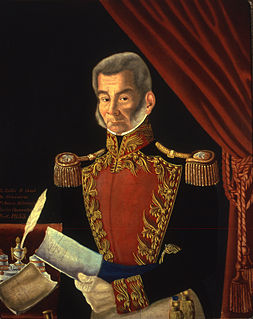
Juan Nepomuceno Álvarez Hurtado de Luna, generally known as Juan Álvarez, was a general, long-time caudillo in southern Mexico, and interim president of Mexico for two months in 1855, following the liberals ouster of Antonio López de Santa Anna. Álvarez had risen to power in the Tierra Caliente, in southern Mexico with the support of indigenous peasants whose lands he protected. He fought along with heroes of the insurgency, José María Morelos and Vicente Guerrero in the War of Independence, and went on to fight in all the major wars of his day, from the "Pastry War", to the Mexican–American War, and the War of the Reform to the war against the French Intervention. A liberal reformer, a republican and a federalist, he was the leader of a revolution in support of the Plan de Ayutla in 1854, which led to the deposition of Santa Anna from power and the beginning of the political era in Mexico's history known as the Liberal Reform. According to historian Peter Guardino: "Álvarez was most important as a champion of the incorporation of Mexico's peasant masses into the polity of [Mexico] ... advocating universal male suffrage and municipal autonomy."
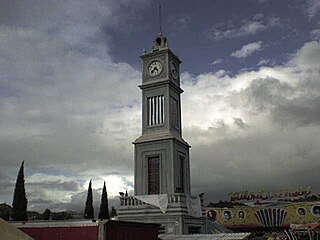
Tlaxiaco is a city, and its surrounding municipality of the same name, in the Mexican state of Oaxaca. It is located in the Tlaxiaco District in the south of the Mixteca Region, with a population of about 17,450.
Villa Guerrero is a municipality in the State of Mexico, Mexico. The municipal seat is the town of Villa Guerrero. It is located on the southern slopes of the Nevado de Toluca, also known as Xinantecatl, and is 50 minutes/58 km from Toluca.

The royalists were the Latin American and European supporters of the various governing bodies of the Spanish Monarchy, during the Spanish American wars of independence, which lasted from 1808 until the king's death in 1833. In the early years of the conflict, when King Ferdinand VII was captive in France, royalists supported the authority in the Americas of the Supreme Central Junta of Spain and the Indies and the Cortes of Cádiz that ruled in the King's name during the Peninsular War. After the restoration of Ferdinand VII in 1814, royalists supported his claim to rule Spanish America, but were split between those that supported his insistence to rule under traditional law and liberals, who sought to reinstate the reforms enacted by the Cortes of Cádiz.
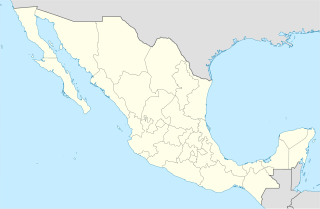
Otzoloapan Municipality is a municipality located at the southeast of the State of Mexico. The name is from the Náhuatl 'Oceloapan' which means "river of lynxes". It is located in the southwest part of the state bordering the state of Michoacán.
Isidoro Montes de Oca (1789–1847) was a Mexican of Spanish Filipino descent who was a revolutionary general who fought in the Mexican War of Independence between 1810 and 1821. He was among the commanders of the army of Vicente Guerrero and José María Morelos. And was a trusted man of Vicente Guerrero and was his sub-General.

The Battle of El Veladero was a battle of the War of Mexican Independence that occurred from 1810 through 30 April 1811 at Cerro El Veladero, Acapulco de Juárez. The battle was fought between royalist forces, loyal to the Spanish crown, commanded by Juan Antonio Fuentes, and Mexican rebels, commanded by José María Morelos and Rafael Valdovinos, fighting for independence from the Spanish Empire. The rebels won.
The Battle of Izúcar or the Battle of Izúcar de Matamoros was a battle of the War of Mexican Independence that occurred on 23 February 1812 in the area around Izúcar de Matamoros, Puebla. The battle was fought between the royalist forces loyal to the Spanish crown and the Mexican rebels fighting for independence from the Spanish Empire.
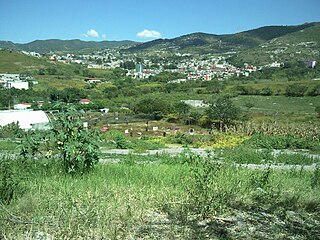
The Battle of Zitlala was a battle of the War of Mexican Independence that occurred on 4 July 1812 on the outskirts of Zitlala, Guerrero. The battle was fought between the royalist forces loyal to the Spanish crown, and the Mexican rebels fighting for independence from the Spanish Empire. The battle resulted in a victory for the Mexican rebels.
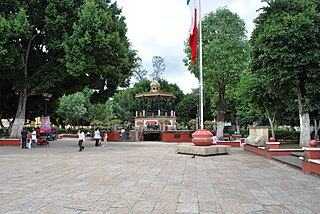
El Siege of Huajuapan de León was a battle of the Mexican War of Independence that was fought from 5 April to 23 July 1812 at Huajuapan de León, in the Mexican state of Oaxaca. The battle was fought between the royalist forces loyal to the Spanish crown, and the Mexican rebels fighting for independence from the Spanish Empire. This Spanish siege of the town, lasting 111 days, was the longest of the entire war. The battle resulted in a victory for the Mexican insurgents.

The Siege of Cuautla was a battle of the War of Mexican Independence that occurred from 19 February through 2 May 1812 at Cuautla, Morelos. The Spanish royalist forces loyal to the Spanish, commanded by Félix María Calleja, besieged the town of Cuautla and its Mexican rebel defenders fighting for independence from the Spanish Empire. The rebels were commanded by José María Morelos y Pavón, Hermenegildo Galeana, and Mariano Matamoros. The battle results are disputed, but it is generally agreed that the battle resulted more favorably for the Spanish whose siege was ultimately successful with the Mexican withdrawal on 2 May 1812.
Leonardo Bravo was a liberal Mexican, landowner, and general. He was the brother of Máximo Bravo and father of Nicolás Bravo. Bravo participated with the insurgent faction during the development of the armed movement of the first stage of the Independence of Mexico.
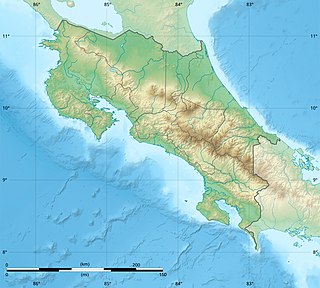
Aguas Zarcas volcanic field is a field of pyroclastic cones located in the Aguas Zarcas district, San Carlos canton of the Alajuela province, Costa Rica.

Aguas Zarcas is a district of the San Carlos canton, in the Alajuela province of Costa Rica.
The Battle of Almolonga was a military action during the First Mexican Empire on January 13, 1823 in the town of Almolonga, between the hills of Teposteyo and Ahuacopexco, in the state of Guerrero during the revolution in favor of the Veracruz Plan in order to put an end to the Mexican Empire.
National Tertiary Route 747, or just Route 747 is a National Road Route of Costa Rica, located in the Alajuela province.
References
- ↑ México a través de los siglos : historia general y completa del desenvolvimiento social, pol. University of California Libraries.CS1 maint: others (link)